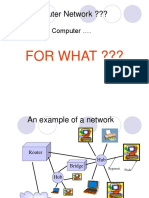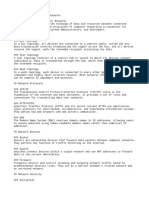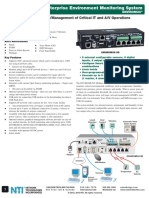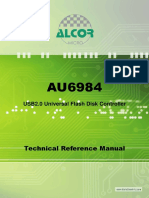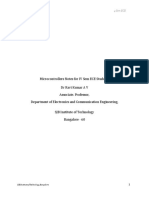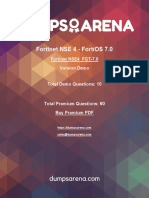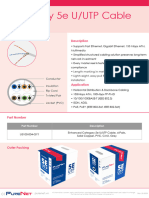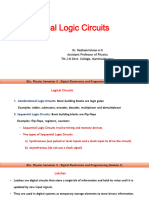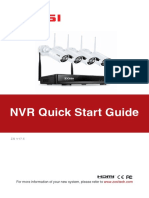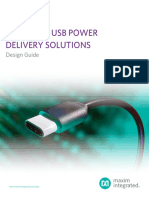Computer Networks: Comprehensive Notes
1 Introduction to Computer Networks
A computer network is a collection of interconnected devices (computers, servers,
routers, etc.) that share resources and communicate using standardized pro-
tocols. Networks enable data exchange, resource sharing, and communication
across various scales, from local to global.
2 Types of Networks
Networks are classified based on geographical scope and connectivity:
• LAN (Local Area Network): Covers a small area (e.g., an office or building).
• WAN (Wide Area Network): Spans large areas (e.g., the Internet).
• MAN (Metropolitan Area Network): Covers a city or campus.
• PAN (Personal Area Network): Connects personal devices (e.g., Bluetooth).
• VPN (Virtual Private Network): Provides secure remote access over the
Internet.
3 Network Topologies
Topology defines the arrangement of devices in a network:
• Bus: All devices connect to a single cable.
• Star: Devices connect to a central hub or switch.
• Ring: Devices form a circular data path.
• Mesh: Devices are interconnected, providing redundancy.
• Hybrid: Combines multiple topologies.
1
�4 OSI Model
The Open Systems Interconnection (OSI) model is a conceptual framework with
seven layers:
1. Physical Layer: Transmits raw bits over a medium (e.g., cables, fiber op-
tics).
2. Data Link Layer: Ensures error-free data transfer between adjacent nodes
(e.g., Ethernet).
3. Network Layer: Handles routing and logical addressing (e.g., IP).
4. Transport Layer: Provides reliable data transfer (e.g., TCP, UDP).
5. Session Layer: Manages sessions between applications.
6. Presentation Layer: Handles data translation, encryption, and compres-
sion.
7. Application Layer: Provides network services to user applications (e.g.,
HTTP, FTP).
5 TCP/IP Model
The TCP/IP model is a practical framework with four layers:
• Network Interface Layer: Combines OSI’s Physical and Data Link layers.
• Internet Layer: Handles addressing and routing (e.g., IP).
• Transport Layer: Manages end-to-end communication (e.g., TCP, UDP).
• Application Layer: Includes OSI’s Session, Presentation, and Application
layers (e.g., HTTP, SMTP).
6 Network Protocols
Protocols are rules for data communication. Key examples include:
• HTTP/HTTPS: Web browsing (port 80/443).
• FTP: File transfer (port 21).
• TCP: Reliable, connection-oriented protocol.
• UDP: Connectionless, faster but less reliable.
• IP: Provides logical addressing (IPv4, IPv6).
• DNS: Resolves domain names to IP addresses.
2
� Example: HTTP Request
1 GET /index.html HTTP/1.1
2 Host: www.example.com
7 Network Devices
Devices facilitate network connectivity and management:
• Hub: Connects multiple devices in a LAN (operates at Physical layer).
• Switch: Connects devices within a LAN, forwarding data based on MAC
addresses (Data Link layer).
• Router: Connects different networks, routing data based on IP addresses
(Network layer).
• Gateway: Connects networks with different protocols.
• Access Point: Enables wireless connectivity.
8 IP Addressing
IP addresses uniquely identify devices on a network:
• IPv4: 32-bit address (e.g., 192.168.0.1).
• IPv6: 128-bit address to accommodate more devices.
• Subnetting: Divides a network into smaller subnetworks for efficient ad-
dress allocation.
Example: Subnet Mask
1 IP: 192.168.1.10
2 Subnet Mask: 255.255.255.0
9 Network Security
Security mechanisms protect networks from threats:
• Firewalls: Filter traffic based on rules.
• Encryption: Secures data transmission (e.g., SSL/TLS).
• VPN: Ensures secure remote access.
• IDS/IPS: Detects and prevents intrusions.
3
�10 Advantages and Disadvantages of Computer Net-
works
Advantages:
• Resource sharing (e.g., printers, files).
• Enhanced communication (e.g., email, VoIP).
• Scalability and centralized management.
Disadvantages:
• Security risks (e.g., hacking, malware).
• High setup and maintenance costs.
• Network failures can disrupt operations.
11 Conclusion
Computer networks are fundamental to modern communication and resource
sharing. Understanding their types, models, protocols, and security measures is
essential for designing and managing efficient, secure networks.



